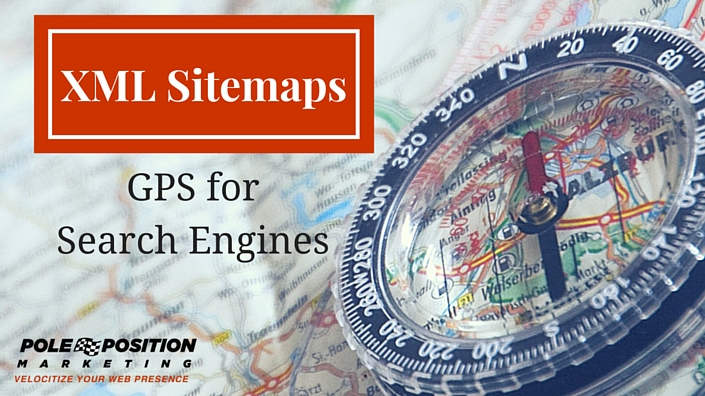
Getting lost in today’s GPS reliant society is a real challenge, but I recently did just that. I went on a road trip to Yellow Springs, Ohio. No, it wasn’t to visit Dave Chapelle. Knowing how easy it is to plug an address into Google maps on my phone, I didn’t find it necessary to take the AAA map my parents got me when I came to Ohio in 2001. Big mistake.
Since I was going to spend the weekend biking and camping, I first needed to make a stop at REI in Columbus, so I typed the address into my GPS. Everything was going smoothly and I was rocking out to the carefully curated playlist I’d made just for the trip. About 15 miles from REI, my phone died. Apparently, my car charger cord had reached the end of it’s functioning life – my phone was plugged-in, but it wasn’t charging.
I’ve been to Columbus a handful of times, but I’m not familiar enough with the area to navigate it without some assistance. I needed turn-by-turn instructions to reach my destination. Luckily, I wasn’t on a time schedule and could afford to get lost. Instead of having to pass on the trip to REI, I was able to get there (albeit later than anticipated) thanks to my limited knowledge of the area.

Search engines may not have human status quite yet, but they work similar to humans in that they can be more efficient when they have directions. Enter XML Sitemaps.
Why You Need a Sitemap: XML Sitemaps Are Equivalent to GPS
Search engines need a map so they can efficiently navigate your site. Creating a sitemap helps them know which pages of your site to crawl and in what order. Without a sitemap search bots may spend time crawling less important pages and leave the site before getting to the most important pages. They also may re-crawl pages that haven’t been updated instead of crawling new or recently updated pages.
How to Create a Sitemap Manually, or With a Third Party Tool
Creating a sitemap manually can be very time consuming, depending on the size of your site. It also requires that you have the technical skills to write code. For this reason, you may want to go with a third party tool. The tool will either auto-generate your sitemap or allow you to create it with ready-to-use settings that make the process a bit faster and more simplified. As long as you follow the steps properly, the results should be the same with a few exceptions that I’ll cover in a minute.
[inlinetweet prefix=”” tweeter=”” suffix=””]Having an XML sitemap allows you to specify the crawl priority of a page and note how often the page is updated on your site.[/inlinetweet]
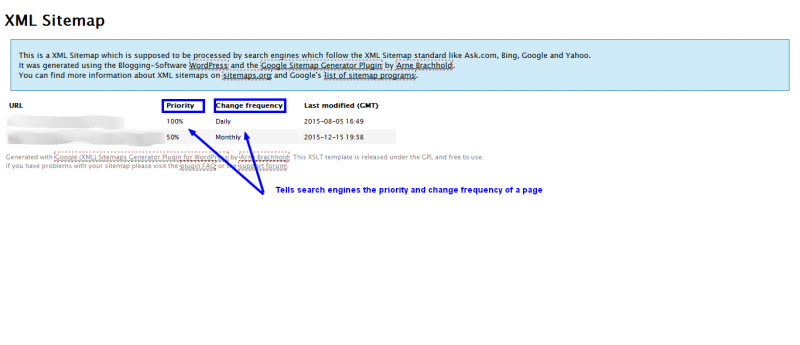
It also allows you to note when the page was last modified. In some tools, these items are calculated and inputted for you based on the data it collects.
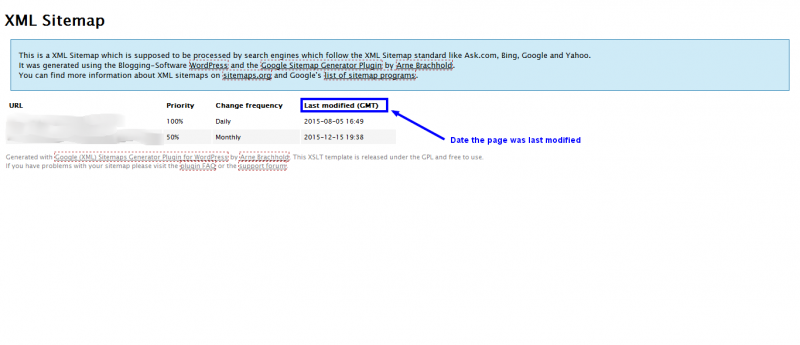
The images above are screenshots of a partial sitemap created by the Google XML Sitemap Generator Plugin. This plugin is an example of a tool that auto-generates the priority of page and sends notifications to the search engines when changes are made to pages. There are other tools like Sitemap Writer that allow you to customize these items when you create your sitemap.
There can be downsides to using tools for creating your sitemap. For instance, as I mentioned above, part of the process may be automated, so you won’t have complete control – leaving room for errors to occur and for settings to not be exactly as you might want them. Another drawback is that some free tools may limit the number of URLs you can include in the sitemap. So depending on the size of your site, it may not be able to handle all the pages you want to include in your sitemap — unless you use the paid version of the tool.
How to Submit an XML Sitemap to Google
STEP 1: Once you’ve verified your site with Google Search Console (previously Google Webmaster Tools), sign into Google Search Console using your Google account info.
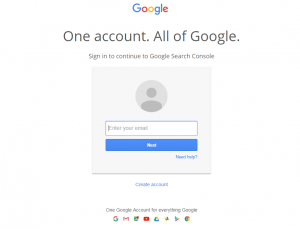
STEP 2: On the homepage of the Google Search Console dashboard, click on your site.
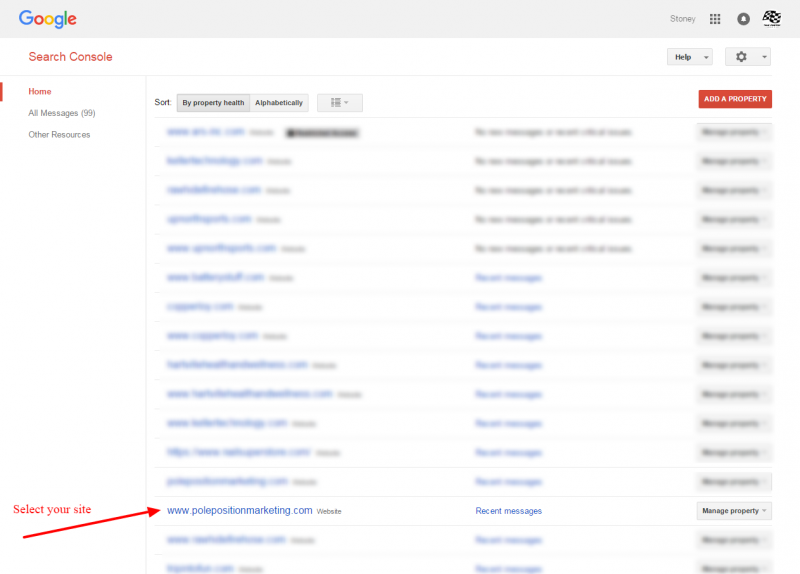
STEP 3: On the left hand side of the Search Console dashboard, click “Crawl” and choose “Sitemaps” from the drop down menu.
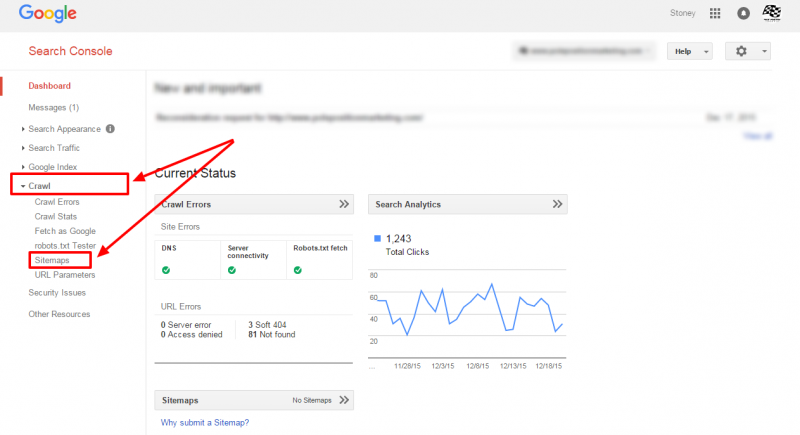
STEP 4: Click on Add/Test Sitemap button in top right corner of Sitemaps page in Google Search Console.
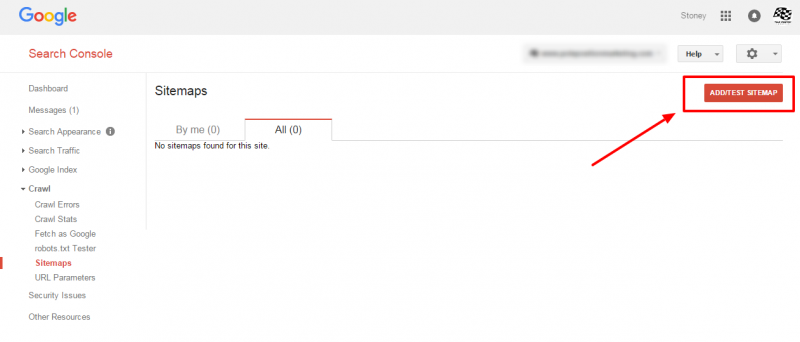
STEP 5: Enter your Sitemap URL into the box that appears when you click on the Add/Test Sitemap button. For example, if your Sitemap URL is https://www.polepositionmarketing.com/sitemap.xml – enter sitemap.xml into the text box. Note: it’s always good to test the Sitemap to find any issues that need resolved prior to submitting.
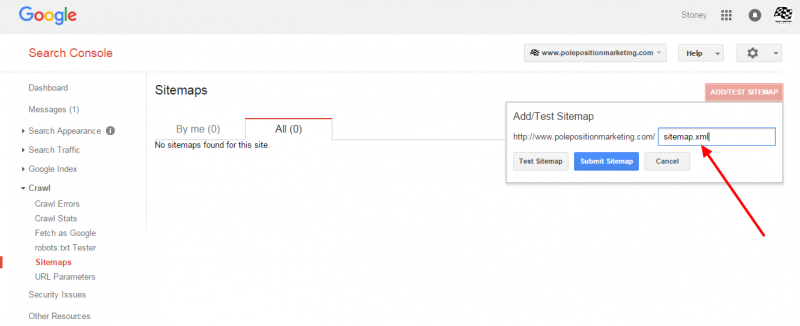
Once you’ve submitted your Sitemap to Google, you can check in Search Console to see how many pages have been submitted versus how many pages have been indexed by Google.
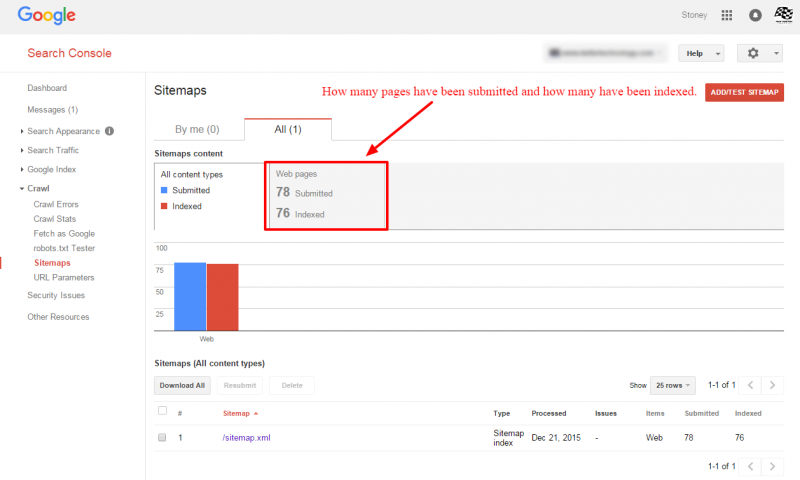
In addition, the Sitemaps page in Search Console will note any issues in your Sitemap. The reporting breaks “issues” down into errors or warnings. In this example, there are 2 reported warnings.
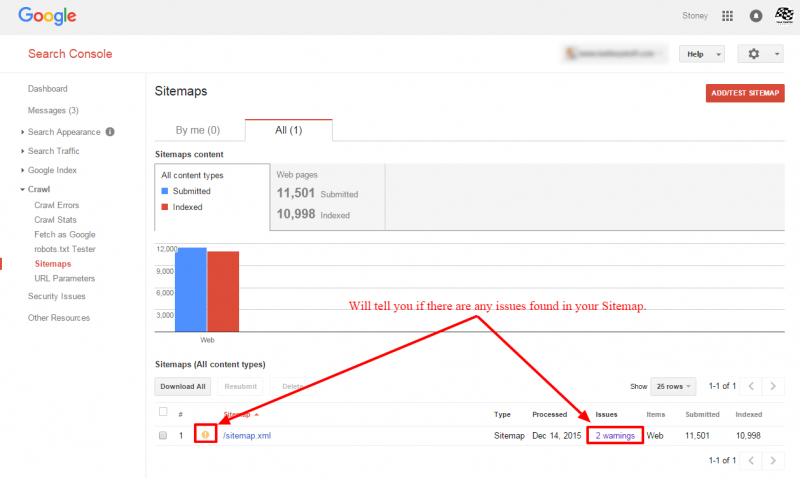
If you click on the warnings under “issues,” you’ll be given more details on those warnings. In this case, the warnings are for pages listed in the Sitemap that are returning 404 error codes. You can read more about it in the description Google provides and see examples they give for more information.
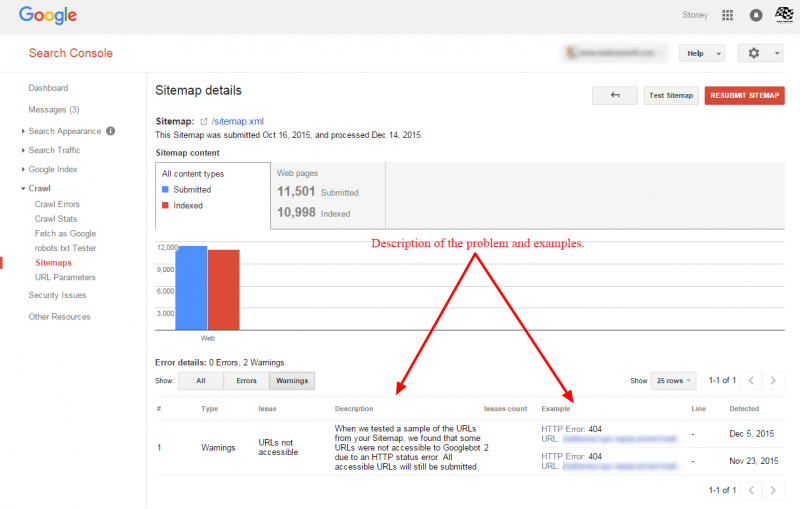
Once you’ve fixed the issues, check back periodically to see if Google has cleared the issues out from the Sitemap details.
This covers the basics of Sitemap creation and submission. You may need to work with your developer to upload the Sitemap file to your site. It should be kept directly off the root folder. I strongly recommend you also submit your Sitemap to Bing Webmaster Tools.
Once you’ve created and submitted your Sitemap, you’ll want to monitor it in both Google and Bing to make sure search bots are crawling and indexing your site in the proper order of hierarchy.
Remember, both humans and robots are reliant on maps to get us to our destinations in an efficient manner. Just as a GPS helps keep you on track, using these tips for XML sitemaps help ensure the search engines crawl the most important pages of your site.
